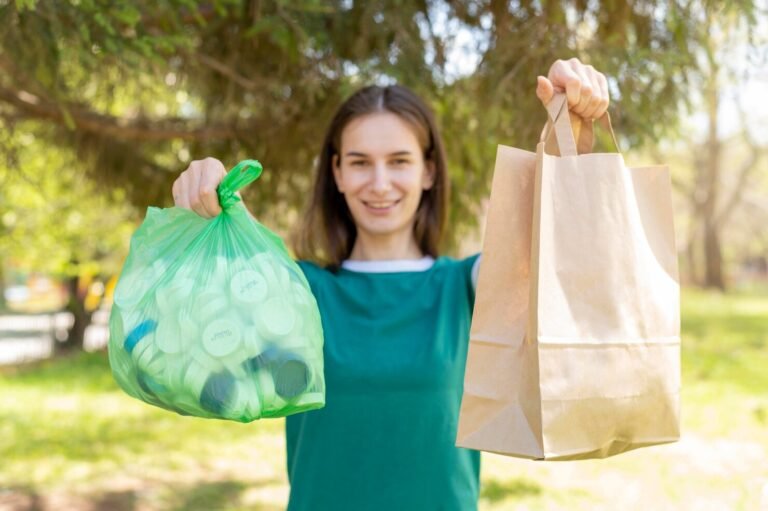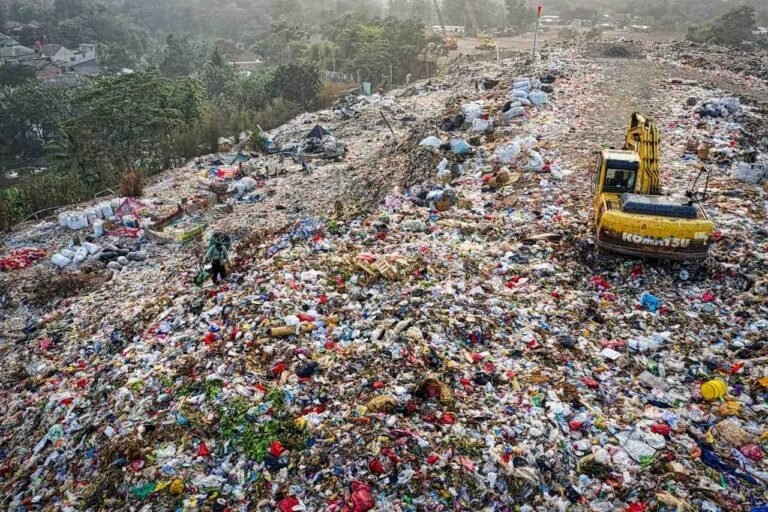Soil Microplastics Pollution Harm Microorganisms and Disrupt Soil Health, Study Reveals
When you walk through a field of rich, dark soil, it almost feels alive—crumbly, full of earthworms, and smelling of life. But under that healthy-looking surface, something worrying is happening. Scientists now warn that our agricultural soils are soaking up billions of tiny plastic pieces—microplastics—that pose serious risks to the invisible microbes that keep the soil fertile.
According to research published in Environmental Sciences Europe and recent coverage by EcoWatch, croplands currently contain around 23 times more microplastics than the oceans, making soil perhaps the planet’s largest plastic sink. These particles originate from various farming inputs, including plastic mulch films, seed coatings, fertiliser encapsulation, machinery wear, compost, and even sewage sludge
Once in the soil, microplastics don’t just sit there. They get carried deeper by earthworms, changing the structure of soil aggregates and disrupting the natural flow of water and air. That matters because if soil clumps are less stable, valuable carbon could escape into the atmosphere, exactly what Professor Matthias Rillig from Freie Universität Berlin has been warning about for years. And there’s more: these plastic particles can change microbial communities—sometimes reducing diversity, sometimes promoting groups that break carbon down faster —and even alter greenhouse gas patterns such as CO₂ and N₂O emissions.
This all adds up to a hidden threat: invisible but powerful disruptions to soil health, carbon storage, and ultimately the resilience of our food systems.

How Fast Are Plastics Building Up Beneath Our Feet?
In China’s cotton-growing regions, long-term monitoring shows an explosive rise in plastic particles within the soil. After five years of using plastic mulch, researchers found around 80 pieces per kilogram of soil. But after 24 years, that number swelled to more than 1,000 pieces—an astonishing 13-fold increase.
In Scotland, the continuous spreading of treated sewage sludge—also called biosolids—across just four years spiked soil microplastic levels by up to 1,450%. Even decades later, these particles barely diminished, meaning once plastics enter, they tend to stick around . Across Europe, agricultural fields receive an estimated 63,000 to 430,000 tonnes of microplastics each year, all hidden in sludge used as fertiliser.
Meanwhile, millions of farmers worldwide are relying on plastic mulch—thin polyethene films—to boost productivity. Today, global usage has soared to roughly 4 million tonnes annually and continues growing at about 5.6% each year.
The Microbial Toll: What the New Science Says
Microorganisms drive nutrient cycling, build resilient soil structure, and support the food we grow. Yet multiple peer‑reviewed analyses now reveal consistent, quantifiable harm, showing how microplastics are quietly disrupting this critical foundation.
Recent meta‑analyses reveal troubling trends. For example, plastics in soil reduce microbial biomass and organic carbon, with an average drop in microbial biomass of around −7 % (effect size ≈ −0.07), while overall soil carbon declines about −5 %. These figures come from hundreds of observations across dozens of studies, signalling that the decrease is consistent, not random noise.
At the enzyme level, microplastics stress the microbial community. Certain enzymes involved in nitrogen uptake—such as urease and leucine‑aminopeptidase—show activity spikes of around +8 %, as microbes scramble for nitrogen resources. But this surge masks a deeper collapse: overall microbial biomass shrinks, signalling a thinning of the soil’s biological diversity and resilience.
A 2025 experiment looked more closely at polylactic acid (PLA) microplastics, often marketed as “biodegradable.” Surprisingly, PLA proved even more disruptive in a greenhouse test than traditional polyethene (PE), hitting rice‑root microbial communities harder. Still, after weathering and ageing in the environment, this toxicity partially faded, suggesting that how long plastics sit matters, but the initial soil hit is clear.
Beyond microbes, microplastics change the soil’s structure. Plastic fragments form novel habitats—the “plastisphere”—hosting communities of specific bacteria (like Acidobacteria and Chloroflexi) while squeezing out others. These shifts ripple through nutrient cycling, organic matter formation, and the entire soil web.
From Lab Bench to Farm Gate: Voices from the Field
Naiku Gaikwad, a 69-year-old farmer from Jambhali village in Maharashtra, has seen firsthand how plastic is slowly ruining his land. Farming on the region’s deep red soils, he recalls the moment he pulled up his watermelon plants—and saw their roots tangled in shiny, plastic-like dust. “Last December, I planted 1,800 vines and didn’t sell a single one. The pests destroyed them all. The soil feels dead now,” he says, crouching beside a field speckled with tiny plastic pieces. When people ask him about soil pollution, he simply points to a nearby 40-foot well—once a source of water, now overflowing with discarded plastic mulch.
Agronomist Jin‑Yong Lee, in his study, connects these failures to deeper biological disruptions. When microplastics invade soil, they disrupt beneficial bacteria, “hijack nutrient cycles,” and effectively starve crops of nutrients—what he calls a microbial imbalance.
Meanwhile, in the U.S., Dr. Maryam Salehi at the University of Missouri leads research into polymer-coated, slow-release fertilisers—praised for efficiency but found to shed microplastic coatings into the soil over time. These coatings break into tiny particles that linger, seep into water, and potentially enter crops. A peer-reviewed paper in the Journal of Hazardous Materials and coverage in The Guardian highlighted that while farmers gain from controlled nutrient delivery, the trade-off may be persistent plastic pollution—unless biodegradable alternatives are adopted.
Case Study | Rice Rhizosphere Under Plastic Stress
A team led by Sheng Lai (Jiangxi Normal University and Jiangxi Academy of Water Science and Engineering) investigated how three types of microplastics—polyethene (PE), fresh polylactic acid (PLA), and UV‑aged PLA—impact rice rhizosphere soil (sandy loam) at a 1 % concentration over four weeks.
Here’s what they found:
- Dissolved Organic Carbon (DOC) rose significantly—by 21 % with fresh PLA and 24 % with UV-aged PLA—indicating that soil microbes ramped up excretion of carbon-rich mucilage in response to stress.
- Total Nitrogen (TN) and phosphorus dropped across all microplastic types, but notably with PE; this points to nutrient loss likely caused by altered microbial activity or leaching.
- Enzyme activities shifted: PE and fresh PLA reduced critical enzymes like sucrase and urease, while aged PLA partially restored them, suggesting microbes worked harder to access nutrients in the disrupted soil.
- Microbial diversity, measured by the Shannon index, fell—especially in PLA-treated soil—indicating community instability. UV ageing eased but didn’t remove this negative impact.
The study’s senior authors, Jutao Liu and Huilin Yang, emphasised that although UV-ageing reduces PLA’s harmfulness, even biodegradable plastics disturb the delicate rhizosphere environment essential for healthy rice cultivation.
The Bigger Carbon Story
Microplastics can loosen compacted soil, letting in more oxygen and kicking microbial activity into high gear—upticks in respiration have been reported up to eight‑fold (a boost that speeds CO₂ release). It’s a classic case of “hormesis”: a small dose energises microbes, but overwhelms them, and it backfires. A meta‑analysis in Environmental Science & Technology showed enzyme activity rises until approximately 40 g of microplastic per kg of soil, then flips—higher levels actually suppress microbial action, illustrating “a little plastic energises microbes, a lot kills them.”
More broadly, a 2024 meta‑analyses confirm microplastics increase soil CO₂ emissions by over 50%, along with boosts in soil organic carbon and microbial biomass, up to 22.6 %, 13.3 %, and 5.5 % respectively. But once concentrations get high, they disrupt soil structure and kill enzymes (like β‑glucosidase, urease, dehydrogenase) by 30–50 %.
In short, a tiny bit of microplastics can kick-start natural carbon cycling—but cross the threshold, and soil health starts collapsing, releasing even more CO₂ with diminishing returns on enzyme performance.
Can Nature Fight Back?
Researchers around the world are now turning their attention to microbe‑based strategies to tackle plastic pollution—simple, gentle, and powered entirely by nature itself.
First, certain Pseudomonas bacteria have shown real promise. These strains can latch onto tiny fragments of PET plastic and digest them, breaking them down into harmless monomers like terephthalic acid and ethylene glycol. What’s impressive is that recent genetic engineering has improved these families: synthetic biology has produced Pseudomonas putida variants that not only consume PET but also use its monomers to fuel their own growth, significantly enhancing their cleanup ability. For example, one consortium involving E. coli even evolved to cooperate, breaking down mixed-plastic blends together, according to a 2024 study.
Then there are fungi. Soil and marine mycorrhizal fungi grow around and within plastic fibres, secreting enzymes like peroxidases and hydrophobins. These not only weaken the materials but also bind them into mats, making it easier to scoop them out. A major 2023 review found over 400 fungal species with plastic-eating capabilities, including marine species that slowly degrade microplastics.
But it’s important to stay realistic. Dr. Matthias Rillig, a soil ecologist at Freie Universität Berlin and a leading expert on microplastics in soil, emphasises that these organisms work slowly, meaning soils could remain plastic archives for centuries before any meaningful breakdown occurs.
Actionable Advice for Farmers, Regulators, and Home Gardeners
- Audit Plastic Inputs: Begin by tracking all your plastic materials—mulch film, coated fertilisers, seed coatings, compost bags. Knowing exactly what you use helps pinpoint where microplastics might enter the soil.
- Use Certified EN 17033 Biodegradable Films: Choose mulch films that meet the EN 17033 standard, which ensures they fully biodegrade in soil without leaving microplastic fragments. These films mineralise into CO₂, water, and biomass within two years under typical conditions.
- Close the Sludge Loop: Biosolids often contain thousands of microplastic particles per kilogram. Regulators and farmers should require the removal of microplastics from sewage sludge before applying it to land.
- Adopt Living Mulches: Planting clover, ryegrass, or other low-growing cover crops reduces weed pressure without using plastic mulch.
- Use Organic Amendments Carefully: Compost inputs like tea bags or fibre-laced cloth can introduce microplastics. Screen compost visually to remove any visible fragments.
- Support Policy Change: Push for extended producer responsibility (EPR) laws. These require agro-plastic manufacturers to pay for collection and recycling, or disposal after use.
- Citizen Soil‑Testing: Affordable FTIR kits are emerging for detecting microplastics—growers can map local hotspots and prioritise cleanup resources.
- Join Research Networks: Help collect soil and microbial DNA samples for networks studying soil health baselines. Your participation strengthens community data and influences policy and remediation.
Conclusion:
Microplastics are no longer just an ocean story. They have breached the terrestrial fortress, compromising the microbial engineers that keep soils fertile, resilient, and climate‑friendly. The latest evidence demonstrates measurable enzyme shifts, biomass losses, and nutrient imbalances — all symptoms of an ecosystem under plastic siege.
Replacing single‑use plastics with bio‑based materials is part of the answer, but equally crucial is a rethink of farming systems: from living mulches and precision compost to sewage‑sludge standards and true circular design.







